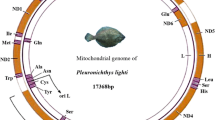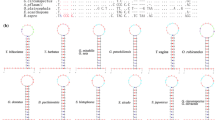Abstract.
The phylogenetic position of hagfishes in vertebrate evolution is currently controversial. The 18S and 28S rRNA trees support the monophyly of hagfishes and lampreys. In contrast, the mitochondrial DNAs suggest the close association of lampreys and gnathostomes. To clarify this controversial issue, we have conducted cloning and sequencing of the four nuclear DNA–coded single-copy genes encoding the triose phosphate isomerase, calreticulin, and the largest subunit of RNA polymerase II and III. Based on these proteins, together with the Mn superoxide dismutase for which hagfish and lamprey sequences are available in database, phylogenetic trees have been inferred by the maximum likelihood (ML) method of protein phylogeny. It was shown that all the five proteins prefer the monophyletic tree of cyclostomes, and the total log-likelihood of the five proteins significantly supports the cyclostome monophyly at the level of ±1 SE. The ML trees of aldolase family comprising three nonallelic isoforms and the complement component group comprising C3, C4, and C5, both of which diverged during vertebrate evolution by gene duplications, also suggest the cyclostome monophyly.
Similar content being viewed by others
Author information
Authors and Affiliations
Additional information
Received: 28 April 1999 / Accepted: 30 June 1999
Rights and permissions
About this article
Cite this article
Kuraku, S., Hoshiyama, D., Katoh, K. et al. Monophyly of Lampreys and Hagfishes Supported by Nuclear DNA–Coded Genes. J Mol Evol 49, 729–735 (1999). https://doi.org/10.1007/PL00006595
Issue Date:
DOI: https://doi.org/10.1007/PL00006595




